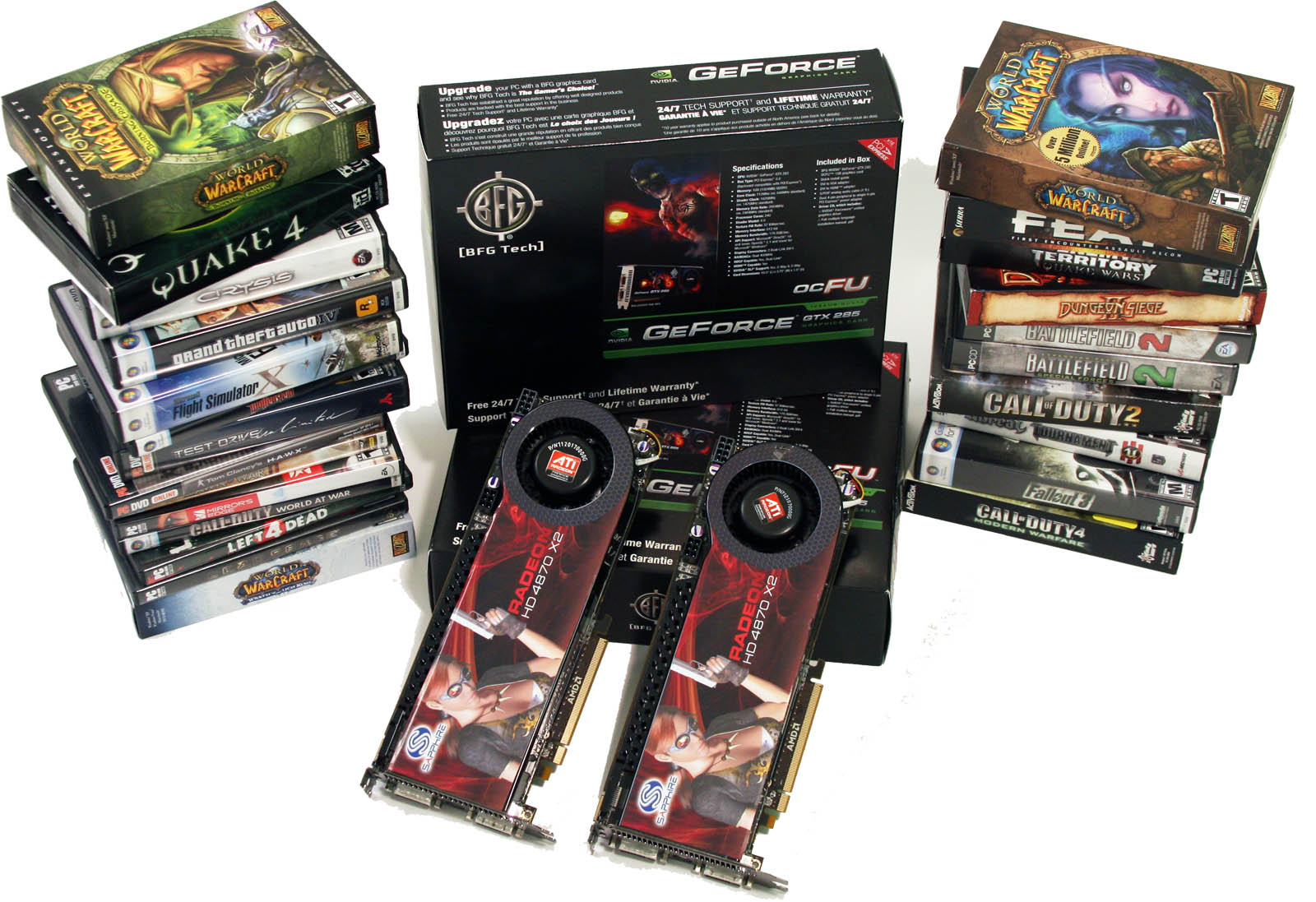Core i5, Core i7, CrossFire, And SLI: Gaming Paradise, Redux?
Introduction
What a great day to be a gamer. And what an enjoyable day to be running benchmarks in a lab full of hardware.
Intel’s X58 Express was the first chipset to support ATI’s CrossFire and Nvidia’s SLI multi-card rendering technologies (I’m purposely ignoring the D5400XS—a $600 board all on its own), giving enthusiast more choice in deploying graphics horsepower than ever. But even the first X58-based platforms were priced between $300 and $400.
Now you can find the absolute cheapest X58 boards for about $170. However, motherboard vendors often have to cut heavily to get prices that low, and the least-expensive CPU they’ll accept is still Intel’s $280 Core i7-920. That's $450, minimum, before factoring in a triple-channel memory kit.
Cost concerns aside, we’ve had no reservations about recommending reasonably-priced X58-based motherboards, 6GB kits, and overclocked Core i7 CPUs up until now—in fact, that’s what I’m running in my own workstation. But it’s a new day, met with a new platform, socket, and processor lineup. Core i5 and Core i7 for Intel’s LGA 1156 interface are here, bringing with them the same CrossFire and SLI support in a significantly more affordable package.
Does Your Platform Even Make A Difference?
All this talk about high-end motherboards and CPUs. But do those components even make a difference when it comes to gaming performance? Last year, with the launch of Core i7, we took Intel’s flagship, added two Radeon HD 4870 X2s, three GeForce GTX 280 cards, and tested seven different games in an effort to answer that question.
Our conclusion was that the platform complementing your graphics armada of choice absolutely does matter to enthusiasts looking for the best gaming performance. Even at 2560x1600—the most graphically-taxing resolution we’re able to run—the difference between a Core i7-965 and Core 2 Quad QX9770 Extreme was easily quantifiable.
Get Tom's Hardware's best news and in-depth reviews, straight to your inbox.
But what if you were able to save $100-$200 on a CPU, motherboard, and memory kit, then turn around and put that savings into a beefier GPU? Maybe even a second GPU? With a much more mature infrastructure of optimized drivers in place, can you get away with a $300 Core i5/P55 combo, or do you need to spend more to get great performance?
-
lashton so we can assume for gaming the 965BE (or 955 oc) and ATi cards are just as fast as Core i7 and i5 but at a fraction of the priceReply -
Dekasav Only thing I don't like is how you knock Crossfire with 2 HD 4870X2's, since when is it even feasible that 4-way CF would scale as well as 2-way SLI?Reply
But excellent review, overall, I'm actually surprised at how the 965BE did, I thought it'd be behind, where it was actually right in the pack. -
dirtmountain I would have liked to see a 780a or a 980a SLI motherboard used to check the SLI numbers on the P2 965BE. I'm also surprised there's no overclocking numbers in the comparison, is that article still to come out?Reply -
cangelini It's upcoming dirt; Patrick is the one working on it (and our Italian team sent word of its i5 and i7s in excess of 4.2 GHz)Reply -
anonymous x ReplyLet us know what you think about this in the comments section, but it was pretty clear that Vista was never a favorite, so we're hoping Windows 7 is a more popular environment in which to test
I like vista, rock solid and stable since I got it years ago. Don't listen to the bashers who never have tried the product. -
lashton You giotta remember vista is design for spoecific hardware and powerfull hardware that can run it, so people with P4 3GHz and vista complain about its speed, vista is OK, i dont like it cause my computer doesm't like it thats fine i get over it and chnage my OSReply -
crash27 So there's no benafit from adding a second 285 to a q9550s or an x4 965 be ??Reply
I get a good performance boost from my second gtx280 with my q9650 @ 4 gz

